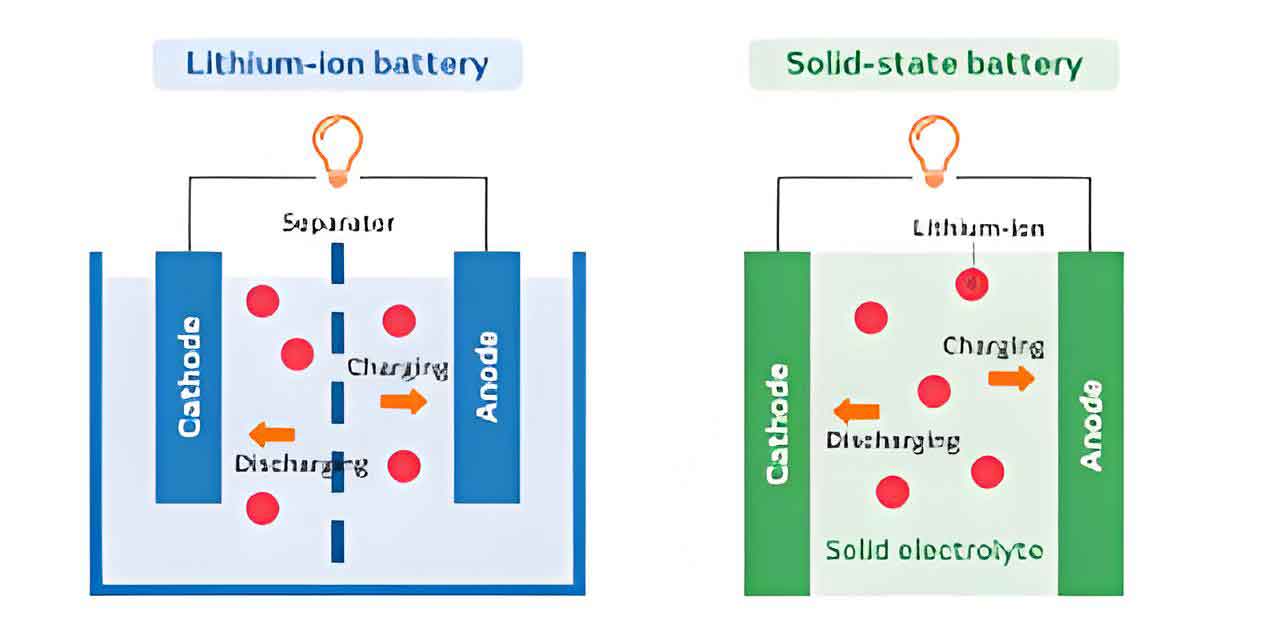
The advancement of battery technology is a crucial element in the evolution of modern electronic devices, electric vehicles, and renewable energy storage systems. Among the various types of batteries, the lithium-ion battery has dominated the market for several decades. However, the solid-state battery is emerging as a promising alternative, potentially offering significant improvements in energy density, safety, and longevity. This article presents a comprehensive comparative analysis of the lithium-ion battery and the solid-state battery, examining their characteristics, advantages, challenges, and future prospects.
Characteristics of Lithium-Ion Battery and Solid-State Battery
Lithium-Ion Battery
The lithium-ion battery is a type of rechargeable battery that uses lithium ions as the primary charge carriers. The key components of a lithium-ion battery include the anode, cathode, electrolyte, and separator. Lithium-ion batteries are known for their high energy density, long cycle life, and relatively low self-discharge rate.
Solid-State Battery
The solid-state battery is an advanced type of battery that uses a solid electrolyte instead of the liquid or gel electrolytes found in traditional lithium-ion batteries. The solid-state battery also consists of an anode, cathode, and solid electrolyte. Solid-state batteries are characterized by their high energy density, improved safety, and potential for longer cycle life.
Advantages of Lithium-Ion Battery
- High Energy Density: Lithium-ion batteries offer a high energy density, allowing them to store more energy per unit weight or volume compared to other battery types.
- Long Cycle Life: Lithium-ion batteries can endure numerous charge and discharge cycles without significant performance degradation.
- High Efficiency: Lithium-ion batteries exhibit high efficiency, with minimal energy loss during charging and discharging processes.
- Low Self-Discharge Rate: Lithium-ion batteries have a low self-discharge rate, retaining their charge for extended periods when not in use.
- Established Manufacturing Process: The manufacturing process for lithium-ion batteries is well-established, resulting in a mature and scalable production industry.
Advantages of Solid-State Battery
- Higher Energy Density: Solid-state batteries have the potential to achieve higher energy densities than lithium-ion batteries, enabling longer driving ranges for electric vehicles and greater storage capacity for electronic devices.
- Improved Safety: The solid electrolyte in solid-state batteries reduces the risk of thermal runaway and fires, enhancing overall safety.
- Longer Cycle Life: Solid-state batteries can potentially offer a longer cycle life, with less capacity degradation over time compared to lithium-ion batteries.
- Wider Operating Temperature Range: Solid-state batteries can operate effectively over a wider range of temperatures, improving performance in extreme conditions.
- Reduced Environmental Impact: Solid-state batteries may have a lower environmental impact due to the elimination of liquid electrolytes and the potential for using more abundant and less toxic materials.
Challenges of Lithium-Ion Battery
- Safety Concerns: Lithium-ion batteries are prone to thermal runaway and fires, posing safety risks, especially in high-energy applications.
- Cost: The cost of lithium-ion batteries remains relatively high, affecting the affordability of electric vehicles and other applications.
- Resource Availability: Lithium-ion batteries rely on finite resources such as lithium, cobalt, and nickel, raising concerns about long-term resource availability and sustainability.
- Environmental Impact: The production and disposal of lithium-ion batteries have environmental implications, including mining-related damage and challenges in recycling.
Challenges of Solid-State Battery
- Manufacturing Complexity: The production of solid-state batteries involves complex processes and materials, leading to higher manufacturing costs and technical challenges.
- Scalability: Scaling up the production of solid-state batteries to meet global demand remains a significant challenge.
- Material Compatibility: Ensuring compatibility between the solid electrolyte and electrode materials is crucial for achieving optimal battery performance.
- Durability: Addressing issues related to the mechanical stability and durability of solid-state batteries is essential for their widespread adoption.
Comparative Table of Lithium-Ion Battery and Solid-State Battery
| Feature | Lithium-Ion Battery | Solid-State Battery |
|---|---|---|
| Energy Density | High | Higher |
| Safety | Moderate | Improved |
| Cycle Life | Long | Potentially Longer |
| Efficiency | High | High |
| Operating Temperature Range | Moderate | Wider |
| Cost | Lower (Established Manufacturing) | Higher (Complex Manufacturing) |
| Environmental Impact | Moderate | Potentially Lower |
| Resource Dependency | High (Lithium, Cobalt, Nickel) | Potentially Lower |
| Manufacturing Process | Established and Scalable | Emerging and Complex |
List of Key Research and Development Areas
- Material Innovation: Developing new materials for both lithium-ion batteries and solid-state batteries to enhance performance, safety, and sustainability.
- Manufacturing Techniques: Advancing manufacturing techniques to reduce costs and improve the scalability of solid-state batteries.
- Recycling Technologies: Innovating recycling technologies to efficiently recover valuable materials from used batteries and reduce environmental impact.
- Performance Optimization: Optimizing battery performance through improved design, material selection, and integration with electronic systems.
- Safety Enhancements: Enhancing safety features in both lithium-ion batteries and solid-state batteries to minimize risks associated with thermal runaway and fires.
- Resource Management: Ensuring sustainable resource management to address concerns related to the availability and environmental impact of critical materials.
Conclusion
The lithium-ion battery and the solid-state battery represent two pivotal technologies in the realm of energy storage. While the lithium-ion battery has been the backbone of modern electronic devices and electric vehicles, the solid-state battery holds the promise of revolutionizing the industry with its superior energy density, safety, and longevity. Both battery types have distinct advantages and challenges, and ongoing research and development are essential to unlocking their full potential.
As technology advances, the comparative analysis of lithium-ion batteries and solid-state batteries will continue to evolve, providing valuable insights into their respective roles in shaping the future of energy storage. By addressing the challenges and leveraging the strengths of both technologies, we can move towards a more sustainable and efficient energy landscape, driving innovation and progress in various sectors, including transportation, consumer electronics, and renewable energy.
